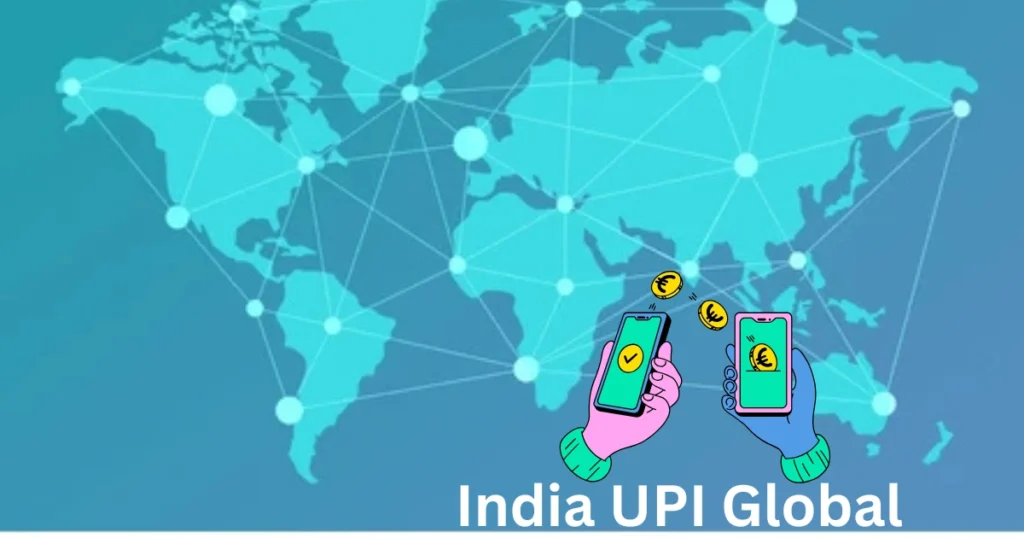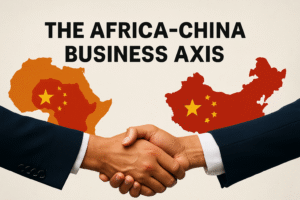India UPI Global Expansion: A Powerful Fintech Revolution

Illustration showing the global reach of India’s UPI system through cross-border digital payments.
India UPI global expansion is reshaping the future of digital payments worldwide. From Singapore to France, India’s Unified Payments Interface is being adopted by countries eager to modernize their payment systems. What started as a domestic innovation has now become a powerful tool of financial diplomacy.
What started as a domestic tool has gradually morphed into a soft-power export, turning India into an unlikely architect of the future of global finance.
Table of Contents
1. How India’s Financial Landscape Gave Birth to UPI
A decade ago, India’s banking system faced a massive challenge: a large portion of the population lacked access to formal financial services. Cash was still king, especially in rural and semi-urban areas, and digital payments were limited, inconsistent, and heavily reliant on card networks that weren’t built for mass use.
Recognizing the need for a better solution, the National Payments Corporation of India (NPCI)—an initiative supported by the Reserve Bank of India and a consortium of Indian banks—developed a new platform: the Unified Payments Interface (UPI). The idea was simple but revolutionary: allow users to send and receive money instantly using just a mobile phone and a linked bank account.
Unlike conventional digital wallets or debit card systems, UPI was designed for interoperability from day one. It wasn’t locked behind one provider’s ecosystem. Instead, banks, fintech startups, and developers were encouraged to build on top of the platform. This open-access model became the foundation for India’s digital payments explosion.According to the NPCI (National Payments Corporation of India), UPI has processed over 18 billion transactions monthly in 2025.
2. India UPI Global Expansion: Countries Already Onboard
The real inflection point came not from technology, but from strategy. While Western payment systems like Visa or Mastercard relied on legacy infrastructure, UPI offered a public good model—fast, free, reliable. In an era where countries are seeking affordable digital finance infrastructure, UPI’s appeal became obvious.
India, through its international payments subsidiary NPCI International Payments Ltd (NIPL), began quietly signing deals. Not with tech giants, but with central banks, public sector players, and regulators. The idea was simple: instead of just exporting an app, India would export an ecosystem.
Countries like Bhutan, Mauritius, Sri Lanka, and France have already onboarded UPI in some form, allowing Indian travelers and residents to make payments seamlessly. In Singapore, UPI was integrated with the local PayNow system, enabling true cross-border interoperability—a rare achievement in global finance.
And this is only the beginning.
3. Why UPI Appeals to the Developing World
For many emerging markets, the question isn’t whether digital payments are useful—it’s whether they can afford the infrastructure. Building a card-based network takes time, money, and cooperation from global corporations. UPI, by contrast, is open-source in spirit, cost-effective, and proven at massive scale.
Countries in Africa, South America, and the Caribbean are now exploring UPI-style platforms, some built with Indian collaboration. Talks are ongoing with Namibia, Peru, and Trinidad & Tobago, where pilot projects aim to replicate UPI’s success within local contexts.
What makes UPI attractive isn’t just the tech—it’s the governance model. It’s public infrastructure, not profit-maximizing software. That matters when countries are wary of foreign digital domination.
Also read India Startup Ecosystem: Is It a Real Turning Point or Just Noise?
4. A New Kind of Soft Power
Traditionally, economic influence came from capital, trade, or military strength. But in the 21st century, digital infrastructure is becoming a new axis of power. Just as China exported 5G and the West exports AI and cloud services, India is now offering something different—digital public goods.
The rise of UPI as a global payment solution adds a new dimension to India’s foreign policy. It allows the country to engage diplomatically through cooperation, not competition. Each UPI integration creates a layer of interdependence, goodwill, and tech leadership.
In other words, UPI isn’t just making payments smoother—it’s quietly building India’s digital footprint across continents.
5. The Real Impact: What This Means for Users
If you’re an Indian traveling abroad, you may soon be able to pay at a cafe in Paris or shop in Dubai using the same UPI app you use at home. No currency conversion headaches, no swiping cards, no ATM withdrawal charges. Just scan and pay.
For non-resident Indians (NRIs), the NPCI now allows UPI registration using international mobile numbers. This makes daily banking, bill payments, and remittances smoother—without needing an Indian SIM.
Even for locals in partner countries, access to UPI-style infrastructure means merchants can avoid expensive point-of-sale machines, and users can transact with minimal friction.
6. What’s Next: Nexus and Beyond
India is now part of Project Nexus, a cross-border payment initiative led by the Bank for International Settlements (BIS). Alongside countries like Singapore, Malaysia, and the Philippines, the project aims to connect real-time payment systems into a global payments highway.
By 2026, a user in Kuala Lumpur could send money to India or Singapore using their local banking app—and receive it instantly. UPI’s architecture is at the center of that dream.
The ambition? To make cross-border payments as simple as sending a message.
7. Conclusion: The Future is Fast, Open—and Indian
In a world where financial inclusion, sovereignty, and speed matter more than ever, UPI is emerging as a quiet champion. Not with fanfare, but with functionality.
India didn’t just build a better payment system. It built a blueprint that others are now beginning to follow.
And if this trend continues, the next time you tap your phone to make a payment—whether in Mumbai, Muscat, or Mauritius—there’s a good chance you’ll be using something born in India.
The pace of India UPI global expansion reflects more than just technological adoption—it signals a shift in how developing economies assert themselves in the global fintech narrative. As more countries integrate with UPI infrastructure, the world is beginning to take notice of India’s model. In the coming years, India UPI global expansion could redefine how money moves across borders—securely, instantly, and affordably.As global financial systems look for faster, more inclusive solutions, the India UPI global expansion stands out as a model with real-world impact. Already influencing how countries like France, UAE, and Singapore handle payments, the momentum behind the India UPI global expansion.
Also read India targets 300 million new users for UPI payments platform






1 thought on “India UPI Global Expansion: A Powerful Fintech Revolution”